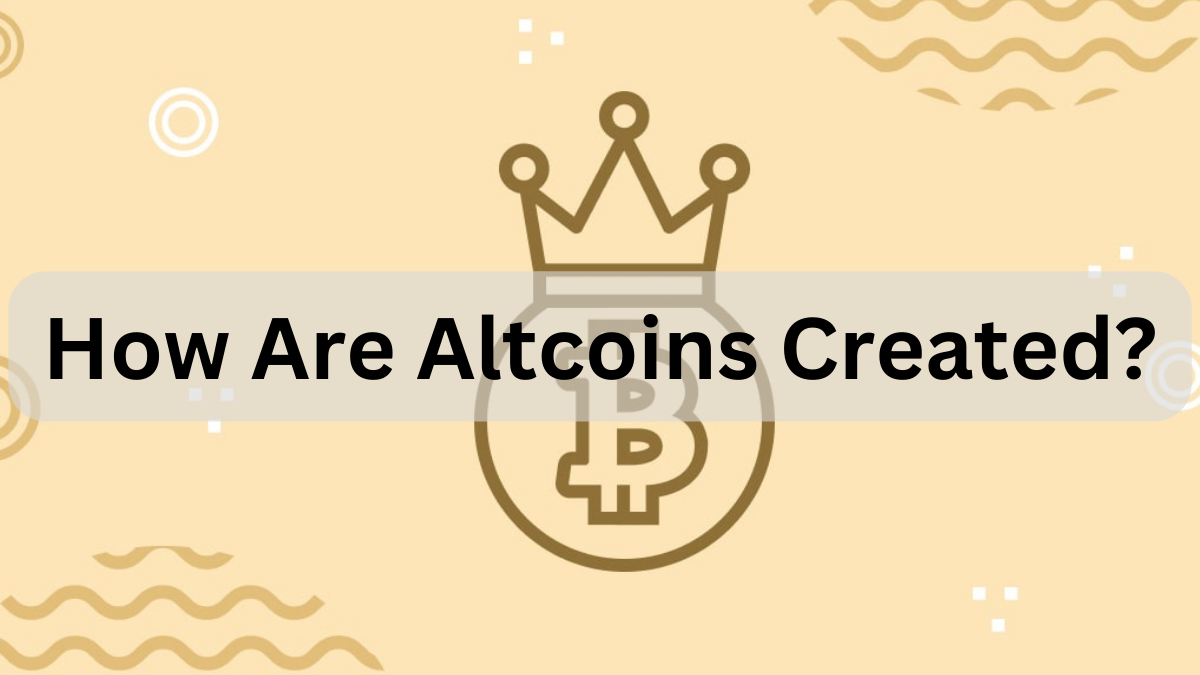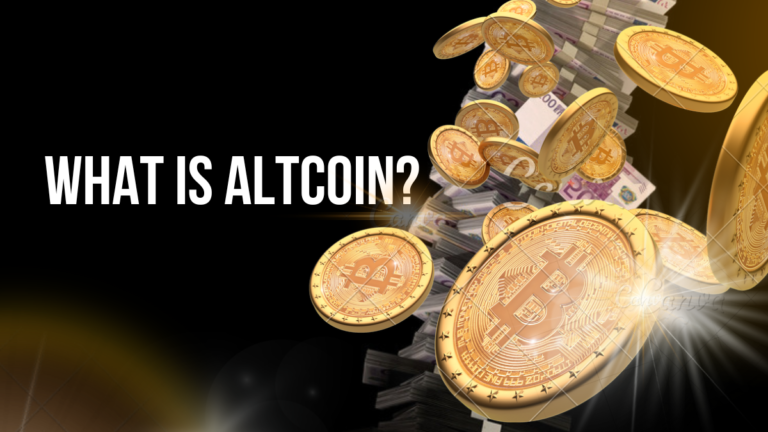How Are Altcoins Created?
Altcoins, short for alternative coins, are cryptocurrencies that are Altcoins Created as alternatives to Bitcoin, which was the first and most well-known cryptocurrency. Altcoins are created through a process called cryptocurrency or token creation, which involves several steps.
Here is a detailed Explanation of how altcoins are created:
- Idea and Concept: The creation of an altcoin starts with an idea or concept for a new cryptocurrency. This could be an improvement or modification of existing cryptocurrencies or a completely new concept. The creators of the altcoin define its purpose, features, and goals.
- Technology Selection: After deciding on the concept, the creators need to choose the underlying technology and blockchain platform on which the altcoin will be built. The most common choice is to use a fork of an existing blockchain platform like Bitcoin or Ethereum. Forking involves taking the existing codebase of a blockchain and making modifications to create a new blockchain with its own features and rules.
- Blockchain Development: The next step is to develop the new blockchain, which includes writing the code, creating smart contracts (if applicable), and defining the consensus mechanism. The consensus mechanism determines how transactions are validated and added to the blockchain. Popular consensus mechanisms include Proof of Work (PoW), Proof of Stake (PoS), and Delegated Proof of Stake (DPoS).
- Token Distribution and Sale: Once the blockchain is developed, the creators need to distribute the altcoin’s tokens to potential users. This can be done through various methods, including initial coin offerings (ICOs), initial token offerings (ITOs), or airdrops. In an ICO or ITO, investors purchase the altcoin’s tokens in exchange for other cryptocurrencies or fiat currency. Airdrops involve distributing tokens for free to existing cryptocurrency holders or members of specific communities.
- Listing on Exchanges: To gain liquidity and allow users to buy and sell the altcoin, it needs to be listed on cryptocurrency exchanges. Creators must approach exchanges and meet their listing requirements, which often include factors such as the project’s credibility, technology, community support, and potential market demand.
- Community Building and Marketing: Building a strong community around the altcoin is crucial for its success. The creators engage with potential users, investors, and developers through social media, forums, conferences, and other channels. They promote the altcoin’s features, advantages, and use cases to attract more attention and adoption.
- Maintenance and Updates: After the altcoin is launched, the development team continues to maintain and improve the blockchain. They address any bugs, security vulnerabilities, or scalability issues that may arise. Regular updates and enhancements are released to ensure the altcoin’s functionality, security, and relevance in the ever-evolving cryptocurrency landscape.
Types of Altcoins
Cryptocurrencies other than Bitcoin are collectively called altcoins. Altcoins are created through a process called “mining”. Miners are rewarded with altcoins for verifying and committing transactions to the blockchain public ledger.
There are many different types of altcoins, each with its own unique features and purpose. Some of the most popular altcoins include Ethereum, Litecoin, and Monero.
Ethereum is a decentralized platform that runs smart contracts: applications that run exactly as programmed without any possibility of fraud or third party interference.
Litecoin is a cryptocurrency that is built on the same open source protocol as Bitcoin but with a few key differences. Litecoin has faster transaction confirmation times and improved storage efficiency.
Monero is a privacy-focused cryptocurrency that uses a special kind of cryptography to ensure that all of its transactions are completely untraceable.

Pros and Cons of Investing in Altcoins
When it comes to investing in altcoins, there are a few things you need to take into account. On one hand, altcoins can be incredibly lucrative investments. Many altcoins have seen massive gains over the past year, and show no signs of slowing down. However, investing in altcoins is not without its risks. Due to their relatively new nature, altcoins are much more volatile than traditional investments like stocks and bonds. This means that they can lose value just as quickly as they gain it. Before investing in any altcoin, make sure you do your research and understand the risks involved.
How to Invest in Altcoins
There are a few ways to invest in altcoins:
- Buy them directly with fiat currency on an exchange. This is the most common and straightforward method.
- Purchase Bitcoin or Ethereum first, and then use those funds to buy altcoins on an exchange. This method may be more complicated for some, but can also save you money on transaction fees.
- Mine altcoins yourself. This requires significant upfront investment in hardware and software, as well as ongoing electricity costs. However, it can be a more hands-on and potentially rewarding experience than simply buying and selling altcoins on an exchange.
Different Ways to Buy & Sell Altcoins
There are a few different ways that you can buy and sell altcoins. The most common way is through cryptocurrency exchanges. There are many different exchanges that list a variety of altcoins, and you can buy and sell them on these exchanges.
Another way to buy and sell altcoins is through peer-to-peer platforms. These platforms connect buyers and sellers directly, and you can trade altcoins with other users on these platforms.
You can also purchase altcoins through initial coin offerings (ICOs). In an ICO, a company will issue a new cryptocurrency or token in exchange for investment funds. You can then use these tokens to trade on the company’s platform or exchange them for other cryptocurrencies.
Regulations for Trading with Altcoins
In order to trade with altcoins, there are a few key regulations that must be followed. First and foremost, all traders must have a valid government-issued ID in order to be able to trade. Secondly, all traders must go through a KYC (know your customer) process in order to ensure that they are legitimate and not involved in any illegal activities. All trades must be made through a registered and licensed exchange in order to be compliant with the law.
Conclusion
Altcoins are created by individuals, companies or organizations with the goal of offering a better alternative to Bitcoin. While some altcoins have added features that make them more attractive than Bitcoin, others have failed due to poor development and security issues.
Ultimately, it is up to investors to decide which altcoin will be successful in the long run. With the right research and careful decision-making, you could benefit from investing in an altcoin that proves successful over time.






